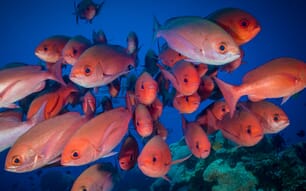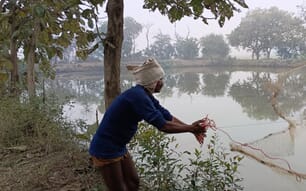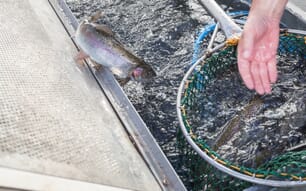Briefly describe your aquaculture career
After my BSc in biology at the University of La Laguna, in Tenerife, I obtained my PhD in fish larval digestive physiology at the Institute of Marine Sciences in Andalusia. I then carried out postdoctoral research at Ifremer and IRTA [Spain], before obtaining a tenured research position at the French National Research Institute for Sustainable Development [IRD]
with the aim to contribute to sustainable aquaculture development and food security in developing countries.
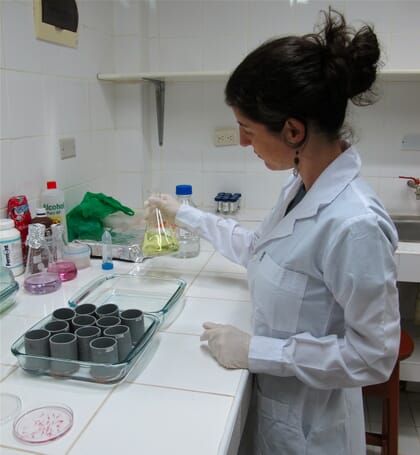
My research now focuses on fish physiology and nutrition for developing new – and improving existing – rearing protocols for candidate species, as well as on alternative feeds and the resilience of cultivated species to environmental changes. In this context, between 2012 and 2016 I lived in Iquitos in Peru, working with the Research Institute of the Peruvian Amazon [IIAP] on some Amazonian native fish species with high aquaculture potential.
What inspired you to focus on aquaculture?
My father, who loves fishing, always provided us with fresh fish during my childhood in the Canary Islands and I have always been passionate about the underwater world and about the functioning of organisms. So, when I found a PhD subject on fish physiology in the context of aquaculture, I didn’t hesitate.
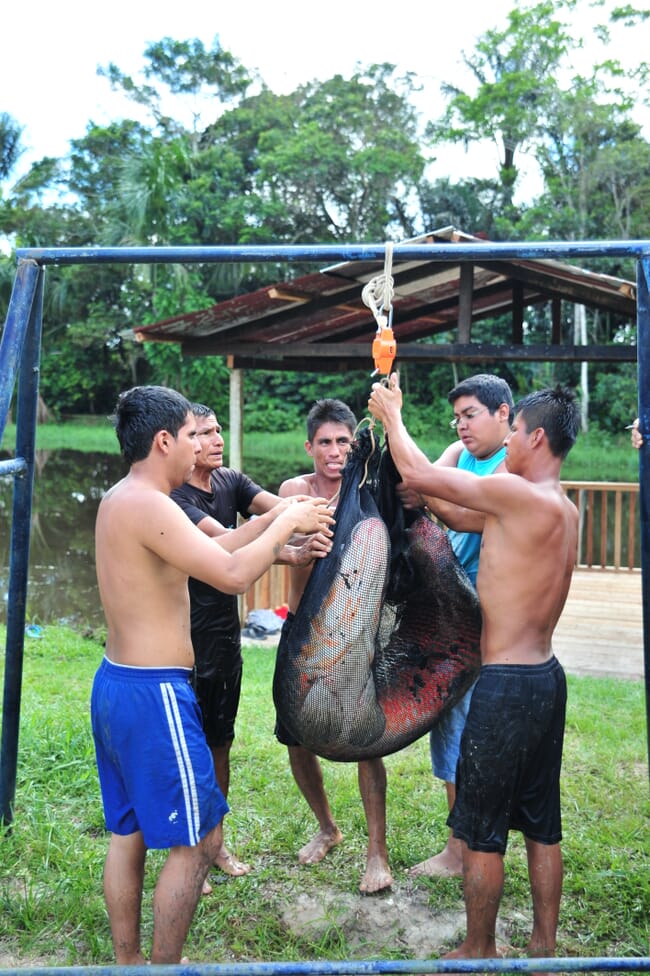
© Guillain Estivals
Describe a typical day in your current role.
One of the things I love the most about my job is that every day is different. IRD is dedicated to working closely with partner countries on global development issues, so researchers have the opportunity to work abroad with their partners. After some time abroad, we return to France where we continue working with our partners from a distance and we might start developing new partnerships in other countries.
Although I’m now based in France, I continue working with my Peruvian partners on Amazonian fish species. We plan experiments that are normally carried out in Peru, but some analyses might be done in our labs in France. We also discuss results, prepare conference presentations and write manuscripts and funding proposals. On some occasions, partners or students might come for a stay in France or I might go [to where they are] for some weeks to work on an experiment or participate in workshops or conferences.
How does life in France compare to living in Amazonia?
It’s definitely quite different! Iquitos cannot be reached by road, and for two years internet access was only possible over satellite and was very slow, making many aspects of my work quite difficult. There were also frequent power cuts, which were a major source of stress during our experiments in recirculating aquaculture systems. These meant we needed back-up plans (and back-up plans for the back-up plans) and I had to make many late-night drives to the research station.
On the positive side, the IIAP research station was a fantastic place to work and you can still encounter Amazonian wildlife like birds, monkeys, iguanas and snakes. It was very interesting to start working with fish species such as Pseudoplatystoma punctifer [spotted tiger shovelnose catfish] or Arapaima gigas [pirarucu], the latter being one of the world’s largest scaled freshwater fish species. Being in Peru enabled me to work much more efficiently with my partners and better supervise students. It allowed me to integrate into the Peruvian scientific sphere, participating in many interesting meetings and discussions and hence better understanding their needs, opportunities and challenges.
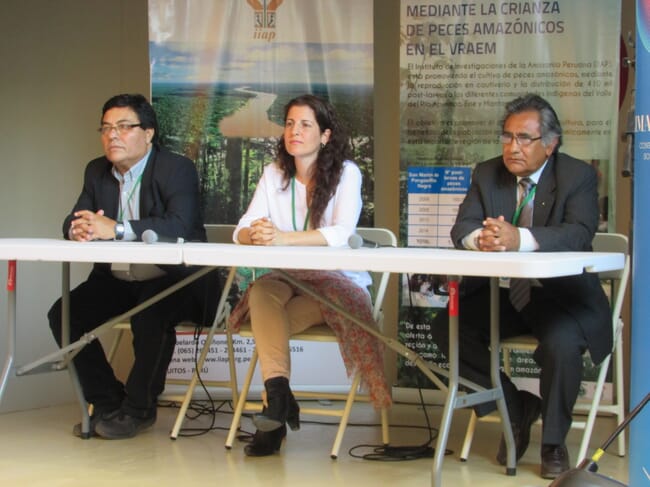
What are the biggest benefits that the culture of native species could bring to the Peruvian Amazon?
The culture of exotic fish species represents a threat to local biodiversity in the case of escapes, so producing native species reduces the environmental consequences of any escapes from farms. Considering that the Amazon basin is home to the world’s broadest freshwater fish biodiversity, with around 15 percent of the world’s freshwater fish species. And new species are still being discovered there, so reducing this kind of environmental impact in Amazonia is essential from both a local and global ecological point of view. Besides, since fish represent one of the main protein sources for the local population and Amazonian stocks are increasingly exploited, the culture of native species can help to alleviate fishing pressure on some of these species.
What were the main challenges you had to overcome?
Our aim was to develop new – or improve existing – rearing protocols for native species, which we could then transfer to the industry. In general, the main challenge when establishing the culture of new species is the lengthy and expensive research that’s required. Since native species are mainly of local interest, it is not always easy to source funding for all the necessary research.
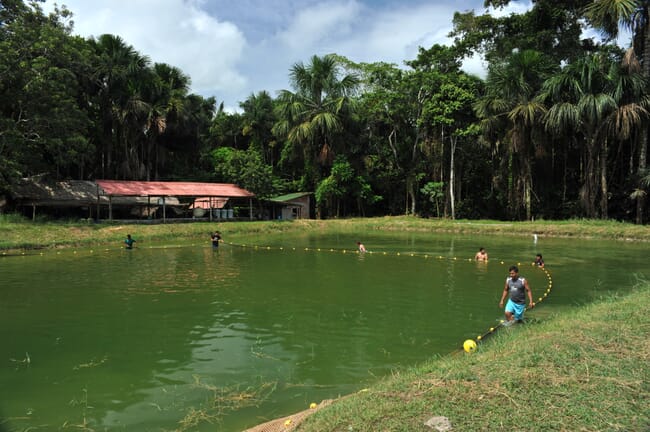
© Guillain Estivals
How do you think your Peruvian project will evolve?
Cooperation with the IIAP continues on several fish species that still need more research before a culture technology can be transferred to the industry. Findings are shared among researchers from countries of the Amazon basin that work with these species so we can all benefit from the advances. Past experiences can always be useful in the future; solutions to some problems, like the incidence of cannibalism in one species that strongly affects survival, might be applicable to other species with similar characteristics.
Are there any individuals or organisations in aquaculture who you’ve found particularly inspirational?
Many of the researchers I’ve met and worked with have been very inspirational to me – in particular my dear friend Dr Chantal Cahu, a specialist in fish nutrition. I find her inspiring not only as a researcher, but also for carving out such an impressive career path. She has always been a source of valuable advice too.
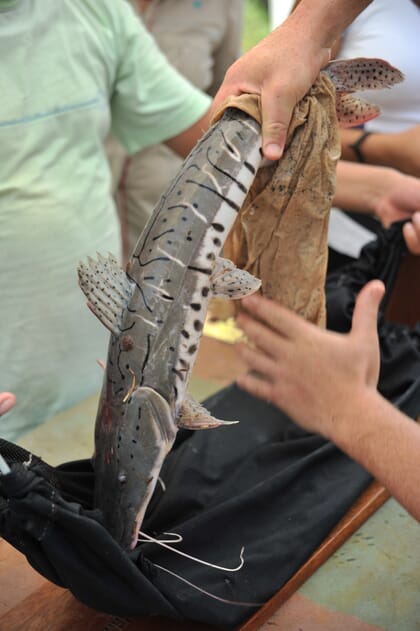
© Guillain Estivals
What advice would you give to women looking to start a career in the sector?
During the first years of my research career I didn’t think that gender made any difference, but it’s clear that men do outnumber women in high-ranking positions. Despite this I’d say that – regardless of gender – anyone wanting to pursue a career in academia must prepare well, be motivated to achieve their goals and persevere. It can take a long time to achieve a stable position.
What would be your dream role in aquaculture and do you think it’s realistic to achieve?
Since I was a child I always wanted to become a researcher, so I’m very happy to have fulfilled this dream. It’s especially rewarding to be working at a research institute where it is possible to contribute to improving living conditions in developing countries and I would like to continue as a researcher for the rest of my career.
Do you think that global aquaculture production is too focused on too few species?
Given the amount of research needed to establish and improve the culture of many new species, it’s understandable that certain established species dominate. However, although exotic species with well-developed culture technologies have had an important role in ensuring food security in several developing countries, it's also important to consider an ecosystem approach to aquaculture.
As the FAO states, this promotes the “sustainable development, equity and resilience of interlinked social‐ecological systems”, so I think that countries should be supported in developing the necessary technologies allowing them to culture their native species.

